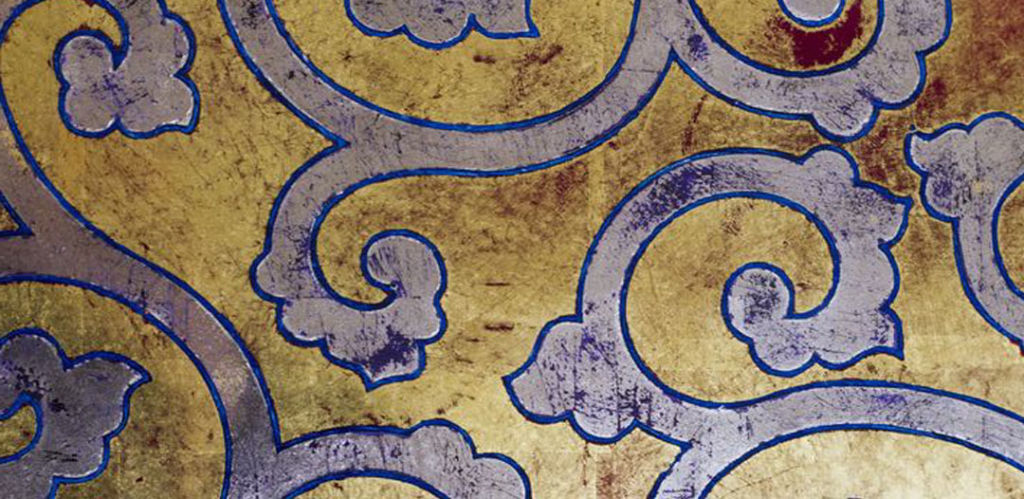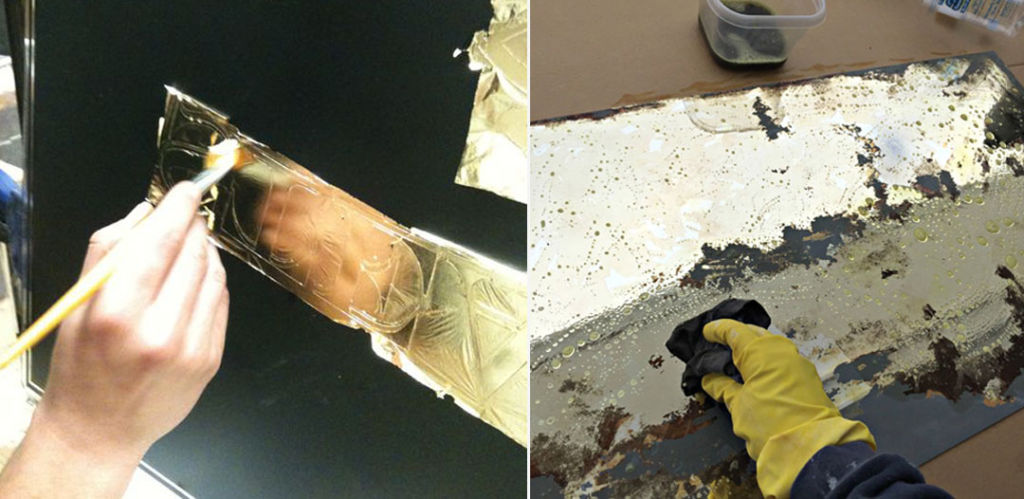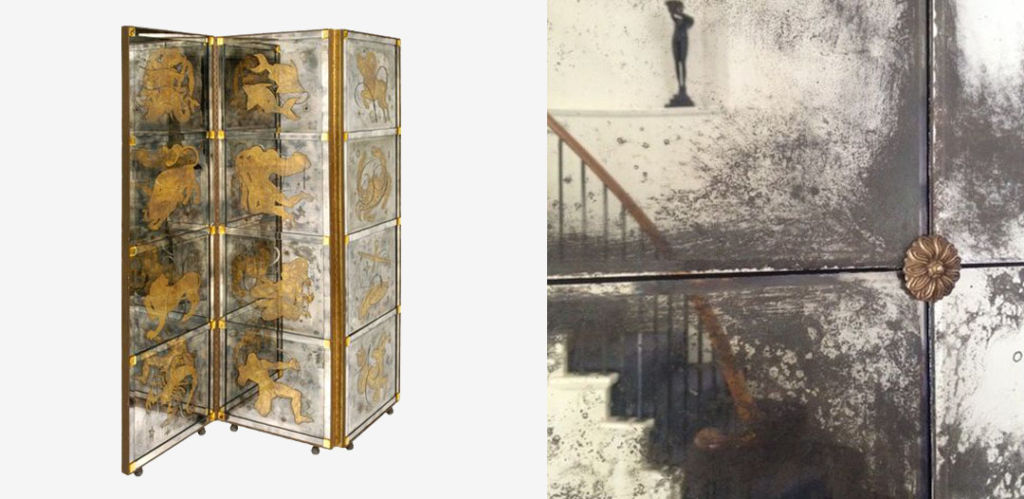Mirror, mirror, on the wall, which type of mirror is the fairest of them all? Well, that depends who you talk to, but we happen to adore Églomisé.
Verre Églomisé is a French term meaning “gilded glass” and refers to the process of applying both a design and gilding onto the rear face of glass to produce a mirror finish. To be clear, Églomisé is technically not the style of the mirror per say, but more of a decoration technique.

In this technique, the back side of glass is gilded with gold or metal leaf (hence its name). Metal is then fixed using a gelatin adhesive, which results in a mirror-like, reflective finish in which designs are then engraved – sometimes elaborately so. For example, when painting an intricate design such as a flower, the artist’s natural methodology is reversed, with highlights applied first and the background applied last.
The metal leaf may be applied using oil-based adhesives (such as goldsize varnish) to achieve a matte finish. The gilding may also be combined with reverse painting on glass, and in this case it is preferable to bake the gold and enamel again to increase abrasion resistance – otherwise, the decoration can be protected by the glass itself (known as “cold gilding”).

The technique dates back to the pre-Roman eras – some say as far back as the ancient Egyptians – but its name is derived from 18th-century French decorator and art-dealer Jean-Baptiste Glomy (1711–1786), who is responsible for its revival in popularity. Because of him, the Églomisé technique began appearing in paintings, furniture, drinking glasses and jewelry. It’s also often seen in the form of decorative panels of clock faces, and in more recent history, as window signs and advertising mirrors.

In more recent years, the Églomisé term has also been used to describe gilded and distressed mirrors which have no actual design or pattern applied, but this is taking it a step away from its original technique. A better term for these types of mirrors would be the less-exotic sounding “Distressed Hand-Gilded Mirror” – not quite as sexy. These mirrors have been put through certain processes and treatments to add a worn-in antique look. Their aged appearance makes them the perfect choice for homeowners who love to juxtapose a vintage touch in their more contemporary home décor, especially when paired with an ornate frame.
_________________________________
ERIC BRAND
Founded in 1996 and based in San Francisco, Eric Brand offers custom-styled furniture and worldwide sourcing along with exquisite materials and finishes, specifically for the high-end residential design market and hospitality industry.
JUNIPER
Named after the fog-licked Juniper trees on the hills of San Francisco, Juniper is an in-stock furniture collection by Eric Brand that pays homage to timeless materials, techniques and silhouettes – brought to life through expert craftsmanship.